Photographs: Parivartan Sharma/Reuters A Correspondent in Mumbai
The Indian Rupee is in a free-fall, having slipped by over 15 per cent this year making it the worst performing currency in Asia, and the third worst globally.
The currency slid to an all-time low of 52.73 against the US dollar, on November 22, but bounced back by over a per cent a day later due to suspected intervention by the Reserve Bank of India. On November 30, it closed at 52.21 agiant the US dollar.
Traders said the RBI intervened (meaning, sold dollars) to the tune of $2.5-3 billion since the rupee touched all-time lows. RBI Governor D Subbarao, however, declined to confirm the RBI had intervened.
The general perception amongst experts is that until the global macro-economic environment stabilises, the rupee will continue to be under pressure as investors the world over flock to safer currencies like the dollar.
Click on NEXT for more...
Why the Indian rupee is falling; how NRIs can gain
Image: US dollar banknotes in a bank in Budapest.Photographs: Laszlo Balogh/Reuters
But why is the rupee falling against the dollar?
1. The main reasons behind the fall of the rupee are an increased demand for dollars due to a spurt in crude oil prices and the flight of foreign funds from the Indian market. Demand for rupees, simultaneously, has dipped because capital inflows are down.
2. Foreign institutional investors are believed to have sold Indian equities worth more than $500 million in just a few trading sessions. The rupee has been under tremendous pressure as foreign investors are getting out of the Indian markets due to the current slowdown in the nation's economy and rising global uncertainties.
And this is not good news for markets like India. Historically, the Indian equity market has shown a strong positive correlation with the rupee movement. So, it is not surprising that the market has fallen in recent times as the rupee depreciated -- it is down 10.6 per cent since August 1.
Click on NEXT for more...
Why the Indian rupee is falling; how NRIs can gain
Image: A trader works on the floor of the New York Stock Exchange.Photographs: Brendan McDermid/Reuters
3. The global financial meltdown in 2008 did relatively little damage to India's economy and the country kept logging impressive 8-per cent-plus growth rate.
However, lack of any notable economic reforms, a perception of policy paralysis, rising number of scams, slowing manufacturing and agricultural growth, rising interest rates and unbridled inflation are taking the steam out of the Indian growth story.
4. The growing Indian trade deficit and the large fiscal deficit are also contributing to the fall of the rupee.
Click on NEXT for more...
Why the Indian rupee is falling; how NRIs can gain
Image: Greenpeace activists paint over a banner with the British Petroleum logo.Photographs: Lisi Niesner/Reuters
5. Higher price of imported goods, especially crude oil that is now ruling at over $100 per barrel, has also led to an increase in domestic inflation and a fall in the value of the Indian currency.
Oil refiners are amongst the biggest dollar buyers in the Indian currency market and the demand especially is at the high towards the end of a month as they make the payments for their imports.
6. High inflation and a strong growth in the Indian economy have already forced the RBI to raise interest rates.
Click on NEXT for more...
Why the Indian rupee is falling; how NRIs can gain
Photographs: Reuters
What the RBI has done to prop up the rupee
The Reserve Bank of India has announced some measures to arrest the decline of the rupee:
1. The regulator has also stepped up its surveillance with banks to keep a check on speculative activity by market participants.
2. The central bank has relaxed external commercial borrowing norms by raising the ceiling for interest rate the Indian corporate sector pays to raise overseas funds.
3. It has also increased the interest rate cap on foreign currency deposits.
4. Separately, the RBI removed the $100 million cap on net foreign exchange supply arising out of rupee swap transactions that banks undertake on behalf of customers.
In a foreign exchange swap, a bank executes a spot and a forward transaction simultaneously for identical amounts to offset each other.
Click on NEXT for more...
Why the Indian rupee is falling; how NRIs can gain
Image: From L-R: RBI deputy Governor Subir Gokarn, IMF head Christine Lagarde and Finance Minister Pranab Mukherjee.Photographs: Charles Platiau/Reuters
5. The RBI also increased the interest rate cap on non-resident (external) rupee deposits and FCNR(B) deposits. All the moves were aimed at increasing dollar liquidity in the market.
6. Market participants also expect the RBI to open a separate window to meet the dollar demand of oil companies, which would ease pressure on the spot market.
RBI Deputy Governor Subir Gokarn said the central bank would intervene to check the sharp movements in the rupee and prevent a downward spiral in its value, but would balance it with the need to retain reserves in the event of prolonged turbulence.
7. In order to attract more flows in foreign currency deposits, the RBI has raised the interest rate ceiling. The spreads for NRE (non-resident external) term deposits were increased from 1.75 per cent to 2.75 per cent, while those on FCNR(B) deposits were increased from 1 percent to 1.25 per cent.
Click on NEXT for more...
Why the Indian rupee is falling; how NRIs can gain
How NRIs could benefit from the fall of the rupee
While the falling rupee is not good news for the Indian economy as imports into the country are now more expensive, for Non-Resident Indians it opens up a new vista to make a quick buck, so to speak.
With Indian interest rates already at peak levels, it makes eminent sense for the NRI to invest in the NRE/NRO account to make the most of it.
Since the US dollar now goes farther, vis-a-vis the rupee, than it has ever before, and the interest rates too at very high levels, the NRIs stand to gain a lot by investing in India.
Since interest rates are high, Indian banks are also offering higher deposit rates on safe, fixed-income plans. So NRIs can really make their remittances count and earn them a higher packet.
Click on NEXT for more...
Why the Indian rupee is falling; how NRIs can gain
Some NRIs have bought real estate in India and are making mortgage payments on that. With the dollar ruling high, it is a good time for NRIs to try and prepay their housing loans in India.
Since the dollar now goes much farther, it might even be a good opportunity for NRIs to invest anew into the Indian real estate market.
Property prices in Indian cities have been on a constant rise and there is little likelihood in the near future for a crash in the market as demand for housing in the metro cities is outstripping supply.
The Indian stock markets are now slipping due to the Euro debt crisis, slowing economic engine, rising inflation and other accompanying woes, the price of shares are at attractive levels.
It would seem like a good time to buy shares when they are priced so low, although there are chances that the Indian stock market may fall further opening up even more appealing opportunities.
Click on NEXT for more...
Why the Indian rupee is falling; how NRIs can gain
Image: An employee checks a Rs 500 note at a cash counter.Photographs: Jayanta Dey/Reuters
What happens if the rupee keeps on falling?
As the rupee falls, foreign investors will want bigger returns for their money to compensate for the higher risk.
This means that the Indian government, companies and individuals will have to pay more for the money they borrow: in other words, higher interest rates.
A major problem with a falling rupee is that it will increase the Indian government's burden of repaying and servicing foreign debt.
Another problem is that it might discourage foreign institutional investment from pouring funds into the Indian markets.
Indian companies which could borrow from the overseas markets at cheaper rates to finance their import and export needs will be badly affected.
Click on NEXT for more...
Why the Indian rupee is falling; how NRIs can gain
Image: A currency exchange dealer counts US dollar banknotes.Photographs: Raheb Homavandi/Reuters
How can India control the value of the rupee in the international market?
The Reserve Bank of India can sell dollars in the open market to bring down the value of the US greenback, albeit slightly.
Normally, the RBI uses its Monetary Policy to defend the rupee's value. Short-term interest rates changes do impact the value of the rupee against other currencies.
But, the RBI has mostly used the policy to stabilise internal conditions, like steps to control rising inflation.
However, if the Indian stock markets boom -- like they did a couple of years ago -- more and more global funds would begin to invest in India thereby strengthening the rupee as the demand for the dollar in the local markets drops.
Click on NEXT for more...
Why the Indian rupee is falling; how NRIs can gain
Image: A woman enters a currency exchange shop.Photographs: Raheb Homavandi/Reuters
But why do currency values fluctuate?
There are many participants in any foreign exchange market. These entities -- like banks, corporations, brokers, even individuals -- buy and sell currencies everyday.
Here too the universal economic law of demand and supply is applicable: when there are more buyers for a currency than sellers, its exchange rate rises.
Similarly, when there are more sellers of a particular currency than buyers, its exchange rate in the global markets will fall.
This does not mean people no longer want money; it only means that people prefer to keep their wealth in some other form or another currency.
Click on NEXT for more...
Why the Indian rupee is falling; how NRIs can gain
Image: An employee counts rupee notes.Photographs: Jayanta Dey/Reuters
Is there any hope for the rupee?
The Indian currency, however, has in the last two trading sessions risen against the dollar under the hope that foreign investors will soon buy into the Indian stock markets.
With risk aversion among foreign investors declining, the Indian rupee could strengthen. However, it remains to be seen for how long would the rupee keep gaining against the dollar.
Given the global macro-economic situation and the domestic slowdown, chances of the rupee gaining much ground currently seem bleak.
Finance Minister Pranab Mukherjee too said, November 23, that the rupee's slide was unlikely to change till things stabilised in the Euro Zone, the world's largest trading bloc and India's biggest trading partner.
Analysts said the rupee would further depreciate against the dollar as investors switched to the latter in the Euro Zone and also due to problems on the balance of payments front in India.

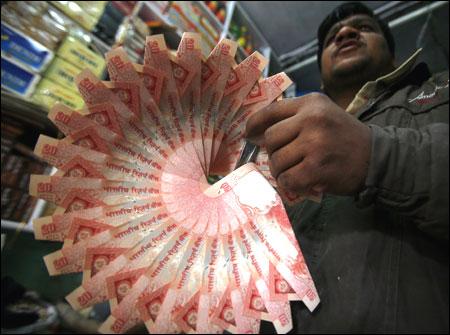
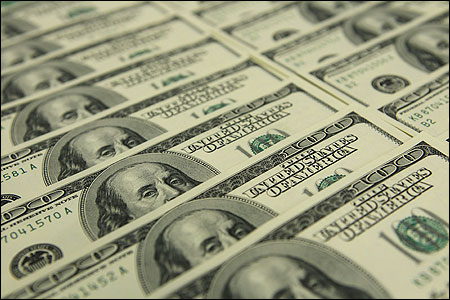


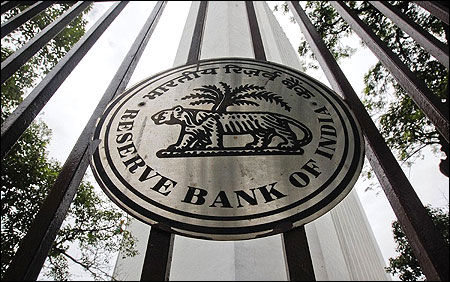
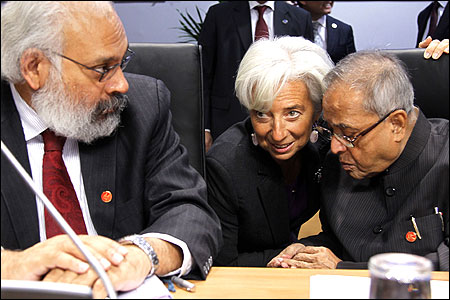



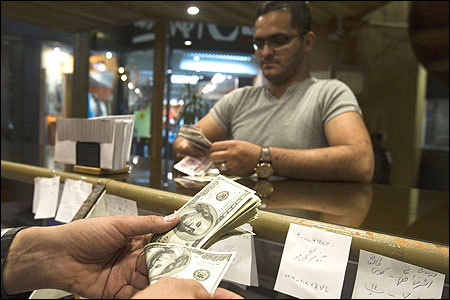
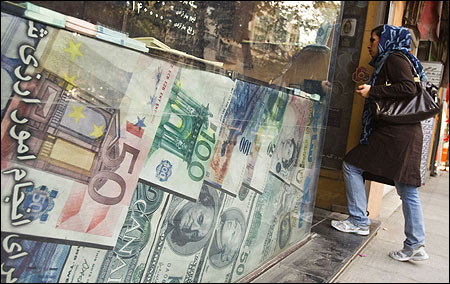
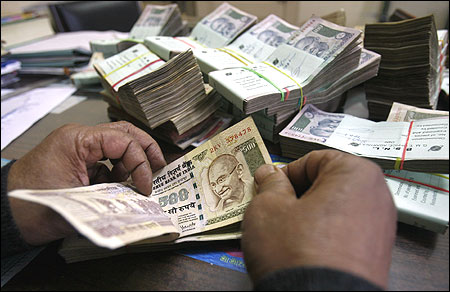
article